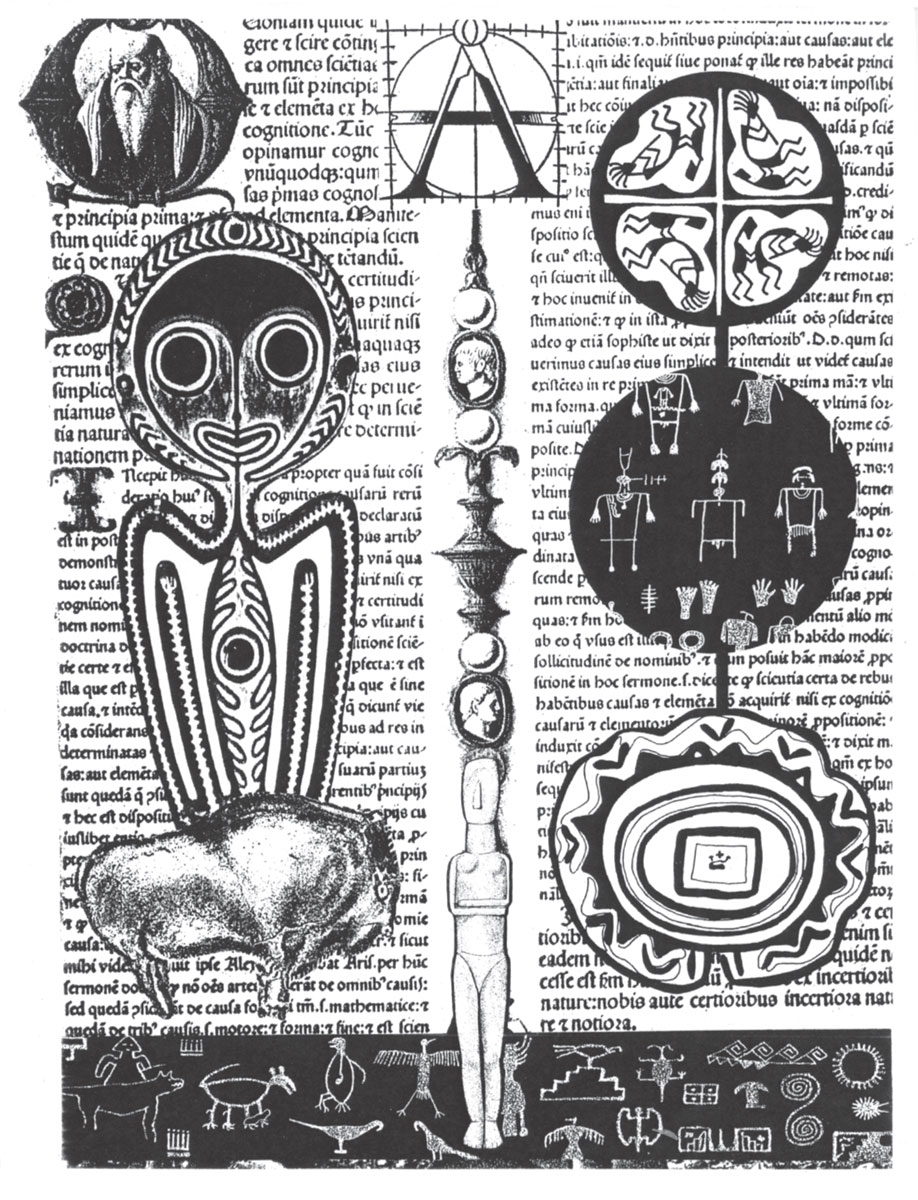Contemplating this amazing anthology, every page a revelation and filled with witty and provocative essays – how (im)possibly to choose and what to say about this medium so bright and fascinating.
As I mused on the task at hand, I kept getting an afterimage of one of the black and white works in the book, a poem by Carol Stetser, in which a selection of ancient texts are overlaid with symbolic primitive goddesses and archetypal figure drawings, and a repeating circular motif that obscures parts of the text. The black text is unreadable (at least by me) and yet seems recognizable. I believe it to be profound, maybe even holy. Along the bottom is a strip of white symbols on a black background, again untranslatable to words, yet understood visually – creatures, persons, birds, symbols imbued with meaning.
Round shapes like crop circles on the right side map out a terrain pointing to another dimension, even another-worldly dimension, but one that seems familiar, somehow intimately comprehensible and in a way, basic, like the capital letter A that seems to form the blade of a totemic sword that cuts through the center of the work. A, the first letter of the English alphabet or alpha (derived from aleph, Phoenician for ox) is echoed by the oxen-like creature on the left side of the page, supporting the primitive yet futuristic human representation. The aleph forms a basis then, supporting an anthropomorphic figure which could represent our past and/or future. The A, sitting top center, is encircled, bringing to mind da Vinci’s Vitruvian Man, an implied symbol of the essential symmetry of the human body, and by extension, of the universe as a whole.
As represented in the title of Carol’s poem, mappaemundi are circular world maps drawn during the European middle ages, not geographical maps per se, but maps providing glimpses into a sacred world. This vision of sacred timelessness is what drew me to Carol’s poem and then back to my own contemplation of visual poetry. Does this poetry as a medium of expression contain essential symmetry?
In 1998, the same year that this anthology starts its collection, a book was published by local author and brain surgeon, Leonard Schlain, called “The Alphabet Versus the Goddess.” One of the theories posited in his book is that a possible redemptive path for our human consciousness and a way for our brain function to re-balance itself and by implication our “universe,” is through renewed emphasis on visual medium, rather than the written word. By breaking the neurotic trance state of the written word, a trance induced through the repetitive left to right, left to right focus of the neural pathways that reading requires, the vispo combination of words and letters with purely visual elements, allows development of a more integrated and holistic mind set. The written word is part of the fabric of our humanness, but our fabric could use some mending right now. Perhaps this anthology and the plethora of uber creative visual poems within it, like those from Carol Stetser, are part of the transformative re-weaving that will free our imaginations to re-create our own world in better balance.
